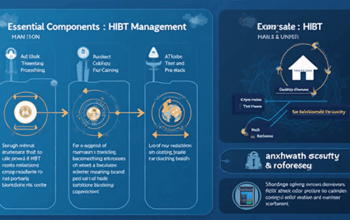Introduction: Why Bitcoin and Sustainability Matter
As the cryptocurrency market continues to expand, the environmental impact of these digital assets is under the spotlight. In 2024 alone, it was estimated that over $4.5 billion in environmental damage related to crypto mining was incurred globally. With Bitcoin’s energy consumption often compared to that of entire countries, its sustainability is now a pressing issue for investors and environmentalists alike.
The rise of Bitcoin carbon offset programs represents a crucial intersection between cryptocurrency and environmental stewardship. These initiatives aim to mitigate the carbon footprint associated with Bitcoin mining and transactions, providing a path for the crypto community to adopt more sustainable practices.
Understanding Bitcoin’s Carbon Footprint
The energy consumption of Bitcoin mining has been a contentious topic over the years. According to the Cambridge Centre for Alternative Finance, Bitcoin’s energy usage hit approximately 120 terawatt-hours (TWh) per year in 2023. To put this into perspective, this energy consumption is on par with that of countries like Argentina.

Let’s break it down:
- Bitcoin’s energy consumption equals roughly 0.54% of the global electricity consumption.
- Mining operations predominantly rely on fossil fuels, especially in regions where electricity is cheaper.
- As more individuals invest in cryptocurrency, the demand for energy-intensive mining practices only increases.
Bitcoin Carbon Offset Programs: A Solution to the Problem
To address the growing concerns surrounding Bitcoin’s environmental impact, various carbon offset programs have emerged. Here’s how they work:
- Direct Offsetting: Some mining companies invest in renewable energy projects to counterbalance their carbon emissions.
- Reforestation Initiatives: For every Bitcoin mined, funds can be allocated to plant trees, effectively absorbing CO2 from the atmosphere.
- Community Projects: Supporting local sustainability initiatives that focus on clean energy and reducing overall carbon footprints.
Case Studies of Successful Offset Programs
Several prominent companies have taken the lead in implementing Bitcoin carbon offset programs. For instance, Binance announced in 2022 that it would support renewable energy projects equivalent to their emissions. Similarly, the startup Offsetra enables Bitcoin miners to track their carbon output, providing solutions for offsets tailored to their specific needs.
How Bitcoin Carbon Offsets Work in Practice
Understanding the operational aspects of Bitcoin carbon offsets is crucial for stakeholders. Here’s a closer look:
- Assessment: Mining operations assess their total emissions based on energy consumed during Bitcoin mining processes.
- Investment: Companies choose how much to invest in renewable energy or carbon offset projects based on their emissions.
- Verification: Third-party audits ensure that the claimed reductions are credible and accurately calculated.
The Role of Vietnam in Sustainable Crypto Practices
As emerging markets like Vietnam embrace cryptocurrency, the need for sustainable practices is paramount. As of 2024, Vietnam saw a 300% increase in cryptocurrency adoption, leading to a surge in mining activities. The Vietnamese government has started to encourage sustainable practices within the industry, pushing for the integration of carbon offset programs.
Incorporating initiatives such as tiêu chuẩn an ninh blockchain could set a global precedent for cryptocurrency mining standards, anchoring Vietnam as a leader in sustainability efforts within the crypto space.
The Road Ahead: What to Expect in the Coming Years
Looking ahead, Bitcoin carbon offset programs are expected to evolve significantly:
- Increased collaboration among blockchain projects to share best practices for sustainability.
- Regulatory pressures may require bitcoin miners to disclose their carbon footprints.
- Innovations in carbon capture technology will make offsets more effective and accessible.
In conclusion, as the cryptocurrency landscape evolves, it is crucial for the Bitcoin community to actively engage in sustainability practices. Bitcoin carbon offset programs provide a viable and necessary avenue for reducing the environmental impact of mining. The future of Bitcoin lies not only in its profitability but in its ability to coexist with environmental stewardship.
Final Thoughts
As we progress into 2025 and beyond, the importance of integrating sustainable practices within the cryptocurrency sector cannot be overstated. By participating in or implementing carbon offset programs, Bitcoin miners and investors can contribute to a greener future. After all, fostering a balance between growth and sustainability is key to securing the long-term viability of cryptocurrencies like Bitcoin.
For more insights into the intersection of blockchain technology and sustainable practices, explore more at btctokenio.





